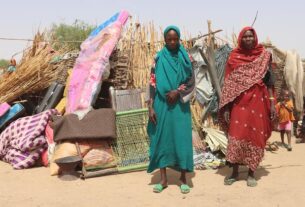The European Bank for Reconstruction and Development (EBRD) has downgraded its 2025 growth forecast for its regions to 3.0%, a 0.2 percentage point cut from earlier projections, citing intensifying global trade policy uncertainty, new tariff hikes, and mounting inflation. A slight recovery to 3.4% is forecast for 2026.
These findings were released in the EBRD’s latest Regional Economic Prospects report, titled “Uncertain Times”, which outlines the confluence of economic pressures now dampening the outlook across Europe, Central Asia, and parts of the Mediterranean where the Bank operates.
Key Drivers of the Downgrade
- Trade tensions and tariffs: Recent U.S. tariff hikes — including 25% duties on steel, aluminum, and automobiles — are expected to raise the average effective U.S. tariff on EBRD economies from 1.8% in 2024 to 10.5%.
- Global uncertainty: Weaker EU demand and a cloudy geopolitical outlook are compounding domestic economic headwinds.
- Inflation resurgence: After a peak of 17.5% in 2022 and a drop to 5.3% in late 2024, inflation is rising again to 6.1% as of early 2025, driven by strong wage growth and expansionary fiscal policies.
Chief Economist’s View
“Our regions have entered a period of heightened uncertainty and slower growth,” said Beata Javorcik, EBRD Chief Economist. “Reducing trade tensions through constructive dialogue is crucial, as prolonged uncertainty carries painful economic costs.”
Regional Highlights
- Central Europe & Baltics: Growth cut to 2.4% in 2025 amid lower external demand and automotive tariffs.
- Western Balkans: Growth slowed to 3.2%, mainly due to political instability in Serbia and weaker spillover demand from EU economies.
- Ukraine: Forecast lowered to 3.3%, reflecting continued infrastructure damage and softer EU trade.
- Central Asia: Still the fastest-growing subregion at 5.5%, though commodity-driven economies like Kazakhstan face downward pressure.
- Türkiye: Growth to decelerate to 2.8% due to tighter monetary policy.
- Southern and Eastern Mediterranean: Projected rebound to 3.6% in 2025; however, this is a downward revision due to ongoing regional conflicts and weak global conditions.
Broader Trends
- Rising defence spending: Average defence expenditure across EBRD economies rose from 1.8% of GDP in 2014 to 3.5% in 2023, with countries like Poland and Czechia becoming top arms exporters.
- Bond market risks: Low-income economies are increasingly turning to market-based borrowing over concessional finance, exposing them to greater vulnerability from interest rate swings and geopolitical volatility.
Conclusion
The EBRD’s forecast underscores a delicate global environment where escalating trade restrictions, resurgent inflation, and fiscal imbalances threaten to reverse progress across emerging and developing economies. While select countries may benefit from trade diversion effects, the broader picture remains one of caution and fragility.
📄 Access full EBRD Regional Economic Prospects Report – May 2025
This summary relies on official data and statements from the European Bank for Reconstruction and Development. All forecasts are subject to change based on global economic developments.
Extract from Ksenia Yakustidi article on European Bank for Reconstruction and Development (EBRD) website.
European-Bank-for-Reconstruction-and-Development-Headquarters-EBRD-London-United-Kingdom-Picture-by-EBRD-Dermot-Doorly



